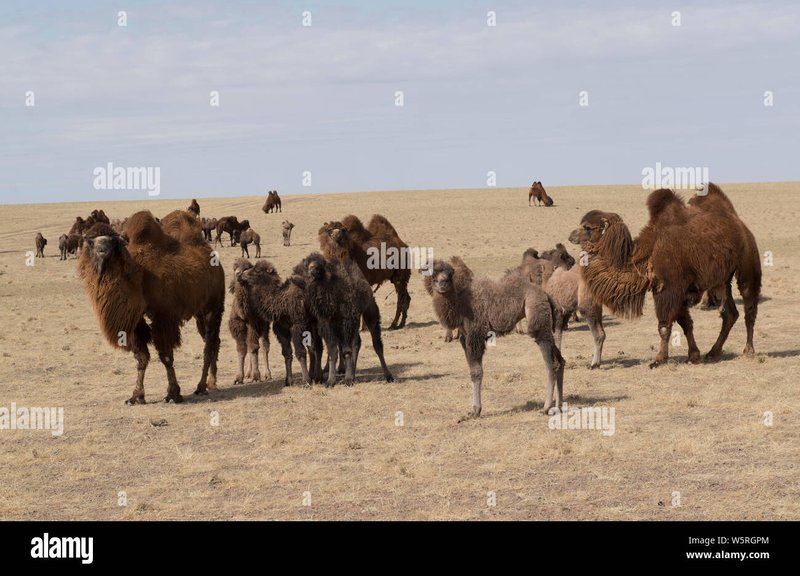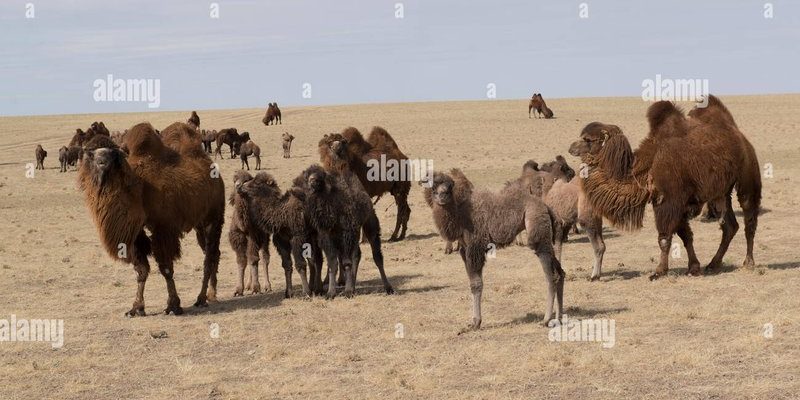
Bactrians, known for their distinctive two humps, aren’t just built for endurance; they also have unique ways of nurturing their young. From the moment a calf is born, it’s clear that the relationship between mother and offspring is crucial for survival. Let me take you through the journey of how Bactrian camels care for their young, ensuring they thrive against all odds.
Understanding Bactrian Camels
Bactrian camels, scientifically known as *Camelus bactrianus*, are made for extremes. Their bodies are equipped with thick fur to keep them warm in icy conditions and fat-stored humps that serve as energy reserves during lean times. You might be wondering how these adaptations play into parenting.
When it comes to raising their young, Bactrians are deeply social. They form strong bonds within their small herds, which can include a few females and their calves. Particularly, mothers and their young share a special connection. This bond is vital, as it provides calves with a sense of security in a world where danger can lurk around every corner, be it from predators or environmental challenges.
The Birth of a Calf
Calving usually takes place in spring when conditions are most favorable. A Bactrian mother typically gives birth to a single calf after about 13 months of gestation. That’s quite a wait! When the calf arrives, it’s already on its feet, ready to take its first steps shortly after birth. This quick onset of mobility is critical, as survival in the wild often depends on the ability to move quickly.
After birth, the mother camel protects her calf intensely, using her body to shield it from threats. You can imagine this as a gentle yet firm hug, cradling the calf in a world full of uncertainties. The mother encourages her young to stay close, teaching them the ropes of navigating their environment while providing essential nourishment through her milk.
Feeding and Nutrition
Speaking of nourishment, Bactrian camel milk is quite special. It’s rich in nutrients and provides the perfect diet for growing calves. Initially, the calf depends solely on its mother’s milk for sustenance. This milk is high in fat and protein, helping the little one gain strength and thrive in tough conditions.
As they grow, calves start to nibble on grass, shrubs, and other vegetation alongside their mothers. Bactrians have developed a unique digestive system that allows them to extract moisture and nutrients from dry, tough plants. Watching a mother encourage her calf to explore and feed on the local flora is quite a sight. It’s like a gentle nudge to the next stage of independence, ensuring the calf learns to forage effectively.
Social Learning and Independence
Bactrian calves aren’t just learning from their mothers; they’re also picking up skills from other members of the herd. Social learning is significant in their upbringing. As calves observe their mothers and siblings, they start to understand their environment better.
Here’s the thing: the early days in a Bactrian’s life are just as much about watching as they are about doing. When a calf sees an older camel navigating a rocky terrain or searching for water, it absorbs those lessons, creating a more resilient future generation. It’s like a living classroom, where everyone plays a role in educating the young.
Protection and Defense
In the wild, protection is crucial. Mother Bactrians are highly protective of their calves, always on the lookout for potential threats. Predators like wolves or even eagles can pose risks, especially for a young, inexperienced calf.
When danger lurks, you’ll often see a mother place herself between her calf and the threat. This instinctual behavior ensures the safety of the young while also demonstrating the fierce maternal instincts of these remarkable animals. It’s heartwarming and a bit awe-inspiring to witness such dedication in nature.
Challenges in the Wild
Despite their remarkable adaptations, raising young Bactrians isn’t without its challenges. The harsh climate and dwindling resources can make survival tough. High temperatures during the day and bitter cold at night can strain both mothers and their calves.
Moreover, as human activities encroach on their habitats, Bactrians face additional stressors, such as competition for food and water. These factors can complicate their efforts to raise healthy young ones. It’s a reminder of the delicate balance in ecosystems and how vital it is to preserve their natural habitats.
The Joys of Raising Young Bactrians
Despite the hardships, there’s immense joy in the bond between a Bactrian mother and her calf. Watching a calf take its first clumsy steps or playfully nuzzle its mother is a beautiful sight. These tender moments speak to the heart of what it means to nurture and raise a family.
In the wild, every day is a new adventure filled with learning experiences. As calves grow, they not only learn to fend for themselves but also become part of a community that supports one another. It’s a cycle of life that continues, reflecting the resilience and spirit of Bactrian camels.
Raising young Bactrians in the wild is a captivating story of survival, love, and adaptation. From the moment they’re born, these calves are enveloped in a world full of challenges and opportunities for growth. The strong bonds between mothers and their young, combined with the lessons learned within the herd, create a nurturing environment that helps them thrive in even the harshest conditions.
Understanding how Bactrians raise their young gives us not only insight into their lives but also a deeper appreciation for the complexities of nature. So next time you see a camel, remember the incredible journey—both for them and their little ones—hidden behind those humps and fur.

